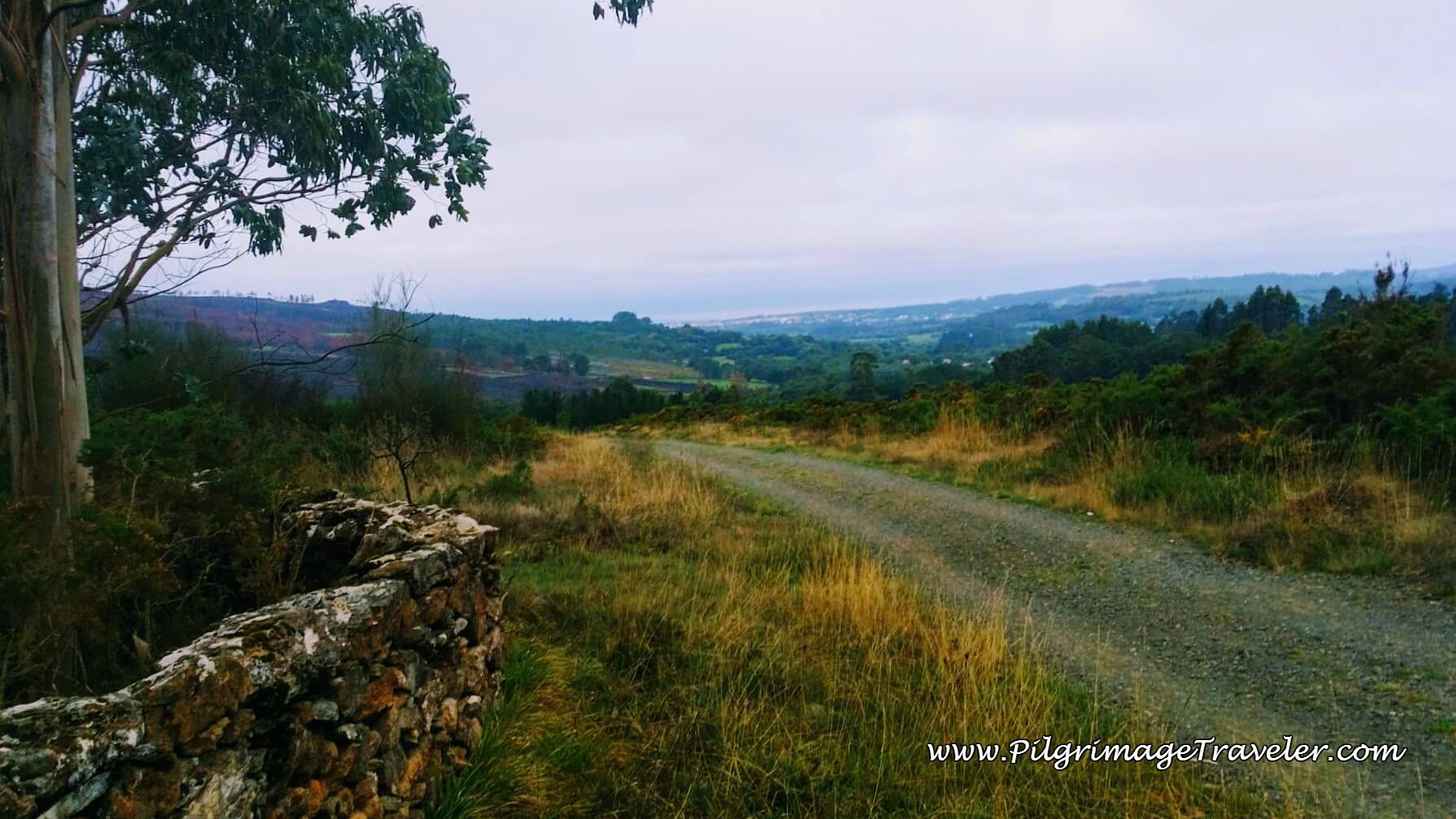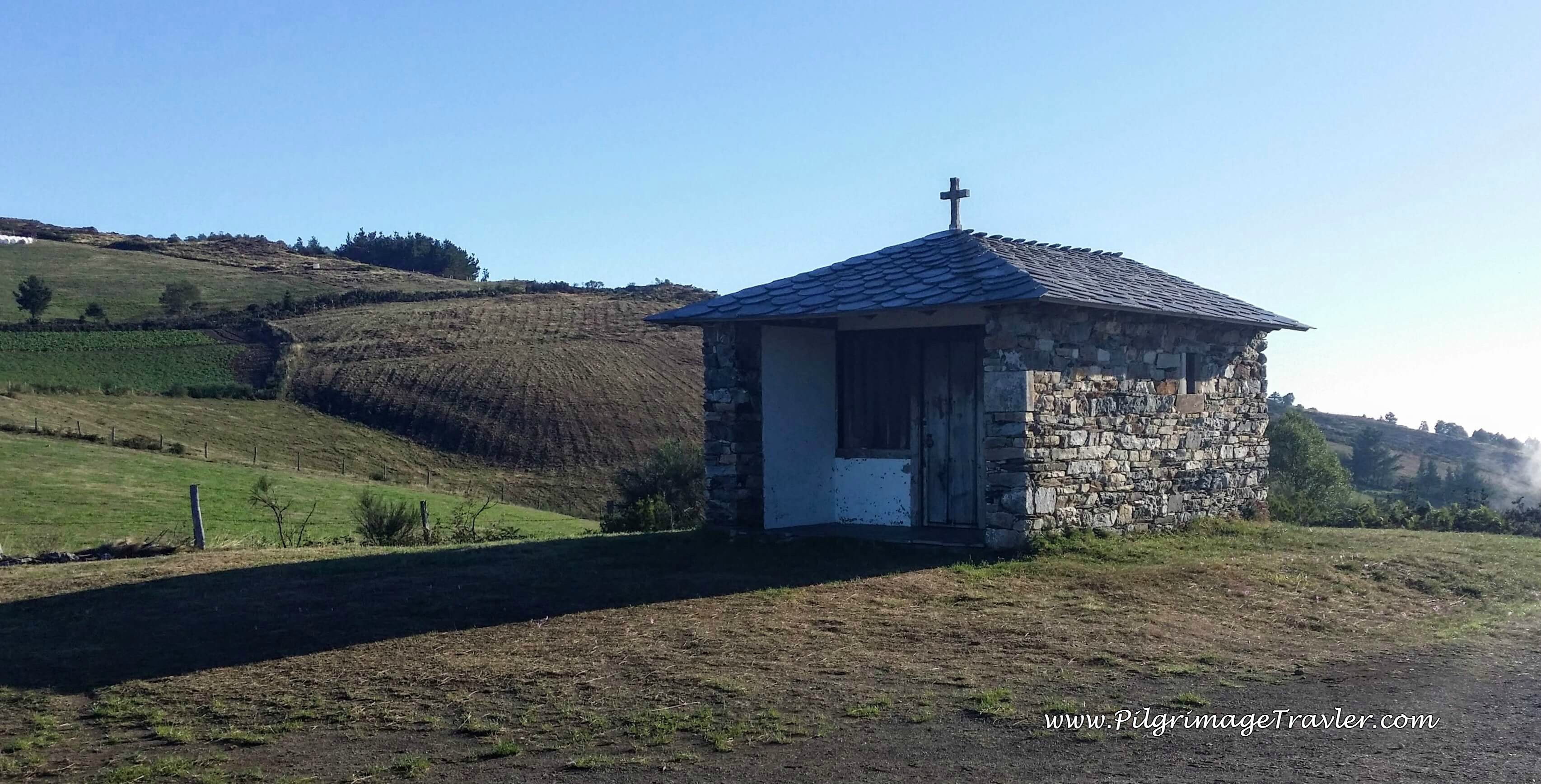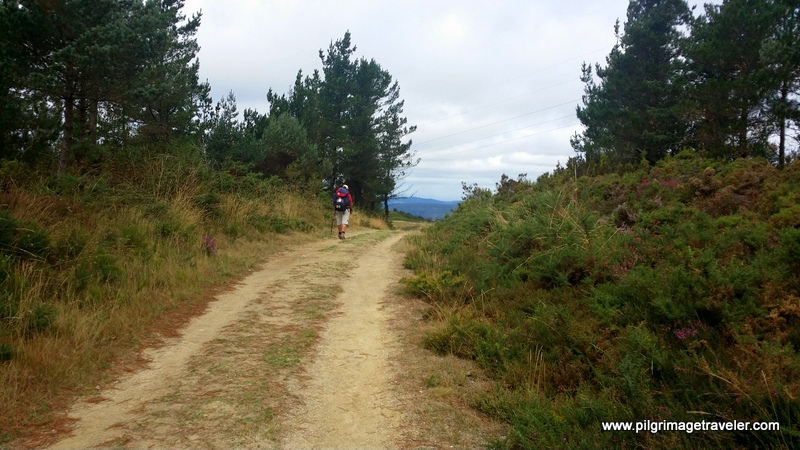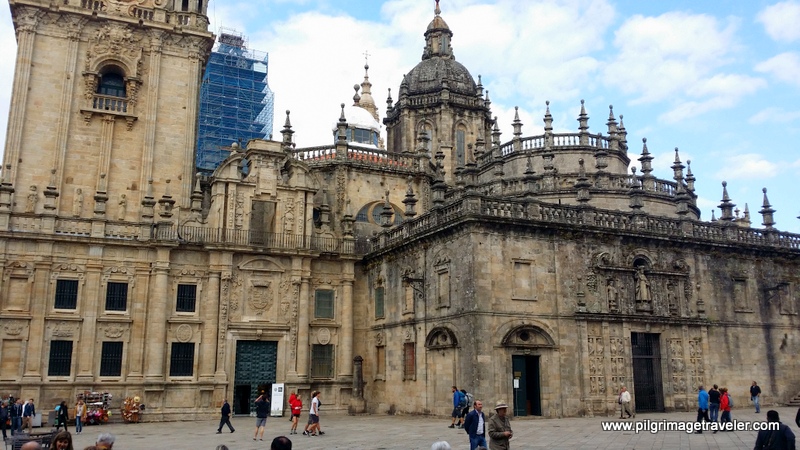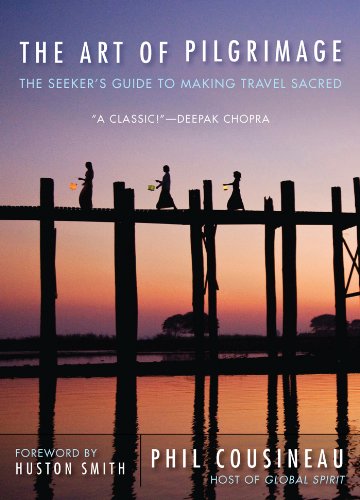- Home
- ~ What is a Pilgrimage?
What is a Pilgrimage?
I have often wondered, what is a pilgrimage and why does the whole concept continue to draw me so? I ponder, why do people make pilgrimages? What is it about walking long distances to a sacred site that is so appealing to so many people, myself included?
“Faith is not the clinging to a shrine but an endless pilgrimage of the heart.” ~ Abraham Joshua Heschel
There are many reasons given why people chose to go on pilgrimage, from the secular to the sacred. Many people can't even verbalize why it draws them, they just know that it is so. The Mystery is indeed difficult to explain, isn't it? The stirring and the longing is there and we don't really know why. But we know we must go, and find out.
For those of us who seek to explain "what is a pilgrimage?" the parallels between the physical journey and the spiritual journey are hard to ignore. Here is my attempt to put into words some of my thoughts and feelings regarding the subject. I hope you join me in my "wanderings" as I open to the possibilities, that indeed, while the physical accomplishment of the pilgrimage is important to me, if I take a closer look, there is so much more!
Is the Spiritual Path Linear?
When we compare the metaphorical journey of the outer (physical) vs inner (spiritual) pilgrimage, there is always the expectation of a destination, whether it be a physical destination to a sacred site, or the illusive "Enlightenment," "Christ Consciousness," "Oneness with God," or however you chose to describe the soul's yearning to connect with the Divine.
If you chose to believe that the spiritual path is linear, you must hold some sort of destination in mind. I believe that quite the opposite is true. Spiritual travel is non-linear. In fact, I believe that it is circular, although, perhaps the circles of travel may spiral "upward," or to a higher state of consciousness, being, and connectedness (whatever that may mean to you.)
While it is in our nature to wonder what would have happened if we chose a different path in life, I believe that the Divine presents us multiple opportunities to make a better, more conscious and holy choice. When we approach a juncture or a crossroads in the inner journey, it often feels familiar. Spiritual travel feels circular, when you say to yourself, "Do I have to go through this again?" or "Why am I always finding myself in this situation?" We are presented many opportunities to learn the same lesson, aren't we?
In her book, "Illuminating the Way," Christine Valtners-Painter describes this phenomenon as moving in circles, "spiraling again and again to familiar places from new perspectives." I love her description of this metaphor. The spiritual journey requires repeated circles, each time seeing the situation with new eyes until the lesson is learned!
Yes, spiritual lessons are born of repetitions. Perhaps then, the outer, more linear journeys are only symbolic of what we hope to achieve in our spiritual lives. The spiritual journey is not linear. In order to change our inner hearts, we must circle back to the same metaphorical place over and over until we imprint the meaning in our very bones. This is what calls us to the linear, physical pilgrimage over and over again, perhaps? This meaning of "what is a pilgrimage?" feels true to me.
I must therefore ponder: Does the physical journey, the very act of walking help us with the imprinting of the lesson? Is the physical journey there to help us focus on the inner task at hand? Is it there to create the necessary movement and the space from our so-called "real" life that we may indeed journey into ourselves to get down to the heart of the matter? Is the physical pilgrimage inviting us yet again into this subliminal space to see with new eyes and hearts?
Moving Our Energy
I have always believed that moving the physical body, opens us in such a way that we are more receptive to all things spiritual. I am a yoga teacher, after all! In a pilgrimage, the mere movement through walking creates the internal and cellular energy for the change. The metaphor of moving forward allows for the "embodiment" of the lesson, so to speak.
When we move our bodies, we move our spirits. When all our focus is on flowing movements, we are open to the possibility of transformation. I know this sounds "New Age-y." However, to put it in more Christian terms, the physical body is the container for the soul. The Christ-in-us.
In addition, the long-distance movement breaks down our defenses as the body tires, the mind tires, and revelations come at the edge. When we are only with ourselves for long, moving periods of time, there is little place to hide. We get to know ourselves in ways that we have never seen before on the pilgrim's path. Fellow pilgrims support us and aid our transformations.
The answer to "What is a pilgrimage?" can be looked at in this most mystical way, of using the body through walking, to access the soul ~ Lovely, isn't it?
The Longing For Adventure
It would be impossible to look at what is a pilgrimage without taking a look at the adventure itself. Without the adventure piece of it, we may not be drawn to pilgrimage at all! I readily admit this for myself.
However, with a pilgrimage, do we hide behind the concept of adventure so that we have an excuse to begin the journey at all? Is the archetype of seeking adventure a mask for our inner longing to find something that is missing in our lives? Is this what is a pilgrimage?
For me, the answer is a resounding "yes!" The physical pilgrimage attracts me again and again, through the reasons I described above. Yet without the time, effort, hardships and foraying into the unknown, the physical pilgrimage would not have half the attraction. While we all prepare for the worst and hope for the best while on pilgrimage, yet we all love to tell a good story about the mishaps of our pilgrimage traveler adventures! This is the shadow side of what is a pilgrimage, isn't it?
It is, however, through the shared hardship, with other pilgrims along the way, that we further embody the experience. It is in the feeling of the pain, the tribulations, the cultural clashes, the different food, the required physical effort, the rating of hostels, hotels and pensions ~ all this is what bring us together to talk freely and openly, sharing in the adventure.
The Outer Geography Changes the Inner Geography
In order to navigate our inner geography, it also takes time, effort and hardship ~ all the same elements of navigating the outer geography.The two DO go hand-in-hand and have been for time eternal!
If indeed, we need to go on a physical pilgrimage for the inner changes we seek, at what point then, do we arrive at some "Promised Land?" The physical journey on pilgrimages is the allegorical way in which we push ourselves toward the goal. Instead of waiting patiently for any revelations by holding the unknown, we create goals of achievement to comfort us into believing that the arrival at the end is all that is required of us. When we do an actual walking pilgrimage, the physical walking and arrival at the destination achieves this for us.
Cynthia Bourgeault says it in Mystical Hope: Trusting in the Mercy of God, "As the manuscript makes clear, the land promised to the saints is reached not only in physical space, but simultaneously in inner space through the journey or moral and spiritual purification that prepares the way for the eventual opening of the eye of the heart." This dual purpose of pilgrimage, where our inner hearts can be transformed, necessitates that we learn to see in a new way, through the eyes of love and compassion.
This journey of pilgrimage traveling, waiting, longing and holding the unknown can take us into dark and tortuous places. The meaning of "what is a pilgrimage?" carries the dark as well as the light.
It is good for me to remind myself that seeking is part of the journey, as is the impatience and confusion too. The places of the heart are difficult to open to and require yielding.
St Brendan, the Navigator, a saint of Irish yore is believed to have said, "You are the veil that hides the paradise you seek." It is only through yielding to expectations, releasing our own stories that bind us to the past, and any dogmas that we unconsciously hold, that real spiritual travel can ensue.
The concepts of a pilgrim and pilgrimage are archetypes, signifying the physical journey that is outward, as a metaphor for the inner journey of transformation.
When walking on the ancient pilgrimage routes, the Celts believe that encounters with God are more prone to occur as a result of all the souls creating these sacred pathways. It is on these sacred pathways that the veil is thin. This is yet another answer to "what is a pilgrimage?" The longing to travel on the same physical paths where saints and sinners have trod is highly significant, if we pay attention to it.
A true pilgrimage of the heart never arrives at a destination. Perhaps this is why we all yearn to return to the physical pilgrimage pathways again and again. It is here in the thin places, created over time from the intent of thousands of pilgrims, that our encounters with the Divine happen more frequently.
Our desire to go on pilgrimage, I also believe, is because our everyday lives make it almost impossible to disconnect. It is very difficult in our modern-day world to stay with the process of a spiritual path. The hours of contemplation required is tough for soul-searching, let alone the inner pilgrimage process of releasing expectations and yielding to what life brings our way. Letting go of destinations is a tough thing to do in a left-brained, goal-oriented and linear world.
The Destination?
In fact, its been said that the best physical, walking pilgrimage has no destination either! If this is the case, why go on pilgrimage at all? What is a pilgrimage without a destination, without a shrine, without a sacred site and holy place?
I hear again and again from the pilgrimage forums for "The Way," the Camino de Santiago, that most often pilgrims feel a great let-down once they have arrived at the cathedral in Santiago de Comostela. They thought the destination was everything. Pilgrims' emotional reactions prove that this is not the case.
For may reasons, the arrival at the sacred place is disappointing. Many of a pilgrim's sorrows and reflections include the following:
- Now I must return to real life, real worries and real responsibilities. The adventure has ended and I don't want to return to my life.
- Now my life will no longer be simple, carrying only what I really need on my back.
- I will miss the concept that the "Camino" will provide. Now I will have to provide for myself.
- Now I may have to make real changes in my life, based on what I have learned.
- I won't see my new soul friends anymore.
- I will never again have the community experience like this.
- I experienced no great enlightenment or healing of any nature, for various reasons. I didn't have enough time.
- People won't be as authentic, open, nor as helpful as they are on pilgrimage.
- I'll forget what I learned when the spiritual high goes away.
- I now have to create time for reflection - not easy in a stressful life.
I am sure, you personally have your own reason(s) why ending your pilgrimage is a let down.
Is it possible that we have gotten what is a pilgrimage all wrong?
I offer, that instead of the sacred site itself being the destination, that upon reaching the holy place, it is only the beginning! The destination is the new beginning. The beginning of a new way of being, after having completed the circle once again.
How can you go forward keeping the lessons of the pilgrimage in your heart? I suggest that we all commit to the following.
- Living simply
- Building community
- Living more (w)holy and openly, willing to receive Guidance along your way, anytime, anywhere.
- Creating a daily practice to keep this open heart alive.
- Commit to noticing the physical presence of the effort and effect on the body, with everything you do and learn the difference between tension and relaxation in your body.
- Start planning your next pilgrimage! (said with tongue in cheek, but oh-so-true!)
The Heart of the Matter
All the effort of a physical pilgrimage, leads us back, once again, to the discovery and rediscovery that the Mystery was with us and within us all along. It is through the outer geography of travel through a walking pilgrimage that changes in the inner geography of the heart are made possible.
At the heart of the matter, is that most times the inner change only comes with the change in scenery, the mixing it up, leaving our comforts of our known world, removing ourselves from the entrainment in our mundane worlds, where new discoveries become possible. And perhaps all we did initially was set out on an adventure!
May all your own thoughts and contemplations on 'what is a pilgrimage?" for you be stirred after reading this, and may you approach you own pilgrimage with an open heart, a sense of adventure, and the perseverance needed to start anew when you reach your own sacred site!
What are Your Thoughts on Pilgrimage?
Have you had a similar experience, or have something you'd like to share? We all would love to hear your thoughts and opinions regarding pilgrimage. Please write your comments, by using the form below.
Read Here What Other Pilgrims Have Said
Click below to see contributions from other pilgrims to this page...
Walking from Illness to Health as a Pilgrimage
Hi - I wanted to share with you that I found your points about one's feelings after a pilgrimage to be very useful - I wrote a few notes of my own around …
What Will My Camino Hold?
Thank you so much for this. I have been pining to do the Camino do at least 5 years, and am finally going in late April. It is oddly difficult to understand, …
In Addition to "What is a Pilgrimage," You May Also Enjoy:
Please Consider Showing Your Support
Many readers contact me, Elle, to thank me for all the time and care that I have spent creating this informative website. If you have been truly blessed by my efforts, have not purchased an eBook, yet wish to contribute, I am exeedingly grateful. Thank-you!
Search This Website:
🙋♀️ Why Trust Us at the Pilgrimage Traveler?
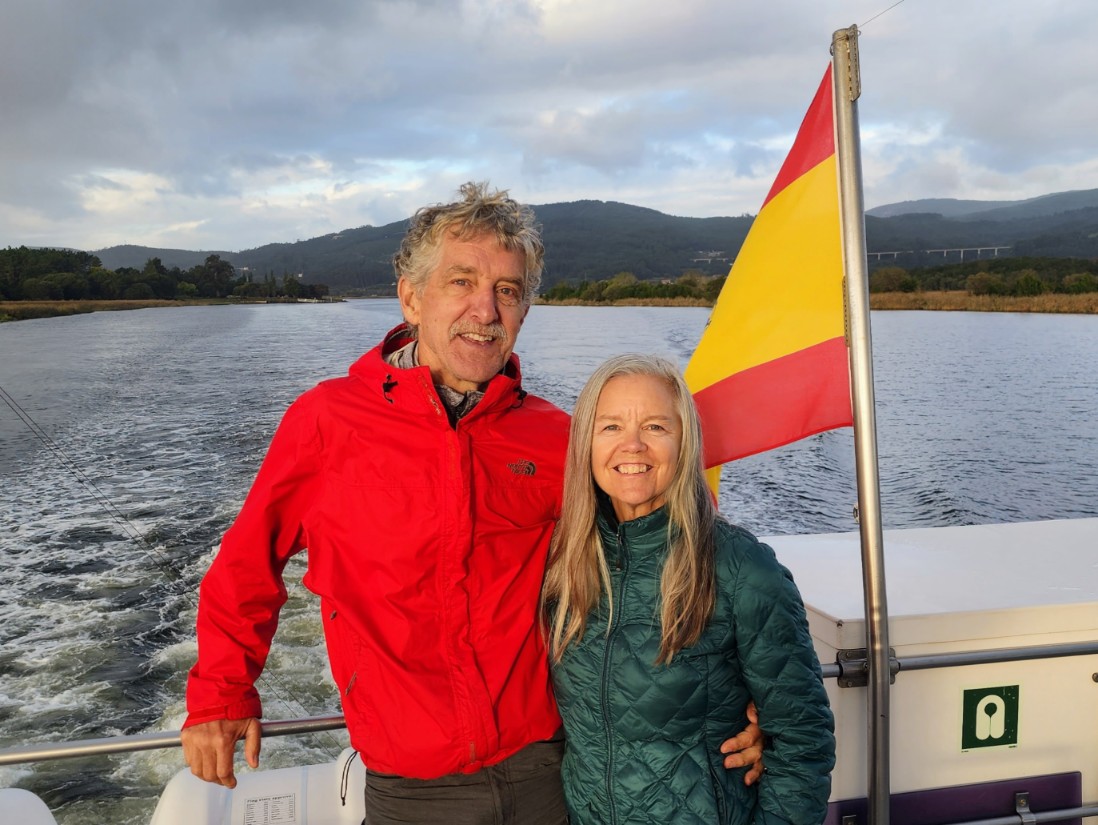
We’re not a travel agency ~ we’re pilgrims, just like you.
We've walked Pilgrimage Routes Across Europe!
💬 We’ve:
- Gotten lost so you don’t have to. 😉
- Followed yellow arrows in the glowing sunlight, the pouring rain and by moonlight. ☀️🌧️🌙
- Slept in albergues, hostals & casa rurals. Ate and drank in cafés along the way. 🛌 😴
- Created comprehensive and downloadable GPS maps and eBook Guides, full of must-have information based on real pilgrimage travels. 🧭 🗺️
- Shared our complete journeys, step by step to help YOU plan your ultimate pilgrimage and walk with your own Heart and Soul. 💙✨
Every detail is from our own experiences ~ no fluff, no AI rewrite. Just fellow pilgrims sharing the way. We add a touch of spirituality, a huge dose of ❤️ and lots of wisdom from the road.
Ultreia and Safe Pilgrimage Travels, Caminante! 💫 💚 🤍
Follow Me on Pinterest:
Find the Pilgrimage Traveler on Facebook:
Like / Share this page on Facebook:
Follow Me on Instagram:
***All Banners, Amazon, Roamless and Booking.com links on this website are affiliate links. As an Amazon associate and a Booking.com associate, the Pilgrimage Traveler website will earn from qualifying purchases when you click on these links, at no cost to you. We sincerely thank-you as this is a pilgrim-supported website***
PS: Our eBook Guide books are of our own creation and we appreciate your purchase of those too!!
Shroud Yourself in Mystery, along the Via de Francesco!
Walk in the Footsteps of St. Francis, and Connect Deeply to the Saint and to Nature in the Marvelous Italian Countryside!
Need suggestions on what to pack for your next pilgrimage? Click Here or on the photo below!
Carbon fiber construction (not aluminum) in a trekking pole makes them ultra lightweight. We like the Z-Pole style from Black Diamond so we can hide our poles in our pack from potential thieves before getting to our albergue! There are many to choose from! (See more of our gear recommendations! )
Gregory BackPack - My Favorite Brand
Do not forget your quick-dry microfiber towel!
Booking.com
My absolute favorite book on how to be a pilgrim:
